How to Find the Right Robot Mower for Your Lawn?
2025-06-23
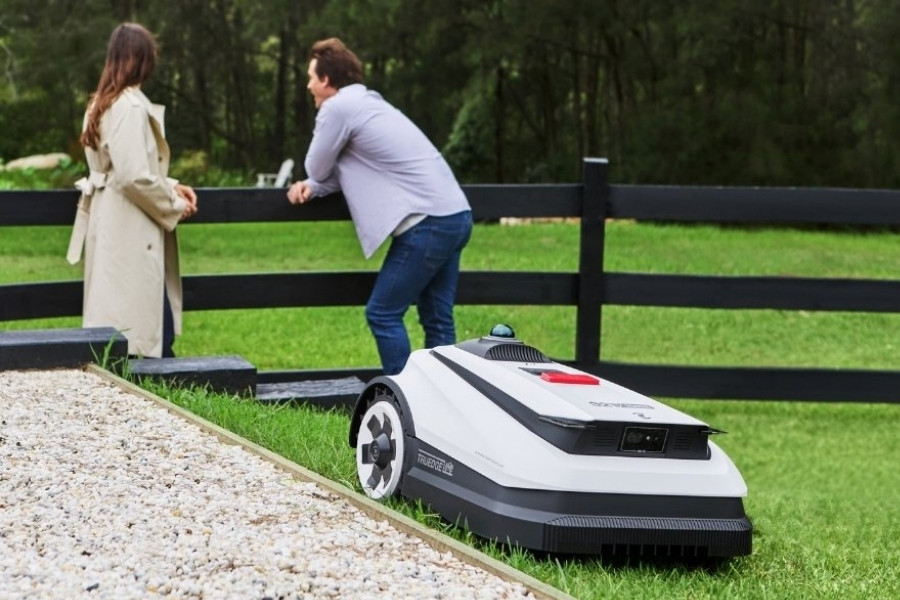
With more people working from home and rising cost of living in cities, Americans are leaving major urban areas and relocating to the suburbs. Since 81% of Americans have a lawn, lawn care has long been part of daily life for millions; yet it can be time-consuming.
In the past years, robot lawn mowers have emerged in the market to make mowing easier. As the market expands, so do the options, specs and features. Choosing the right one isn’t always easy; to save time and avoid sweating under the sun, find out how robot lawn mowers collect grass and how to pick the best one for your yard.
Why Consider a Robot Lawn Mower?
A robot lawn mower is useful because it saves time and labor while keeping your lawn healthy with consistent trimming. Powered by batteries, it runs quietly and produces no direct emissions. Most importantly, you can schedule and control it remotely through a mobile app.
When you compare traditional models like ride-on mowers and robot mowers, the latter operate autonomously even when you’re not home. GOAT robot mowers, for example, use LiDAR to enhance mapping and navigation. These electric models are also quieter and more eco-friendly than gas-powered alternatives. Despite the higher initial cost, the time savings and low maintenance make robot mowers a worthy long-term investment.
How to Find the Right Robot Mower for Your Lawn?
To find the right robot lawn mower for your lawn, start by evaluating your lawn’s layout: slopes, narrow paths, or no-go zones. Then, compare different models to see which ones have the best features that match your needs. Don’t forget to consider your budget and the maintenance required. Reading online reviews is also a great way to do your research.
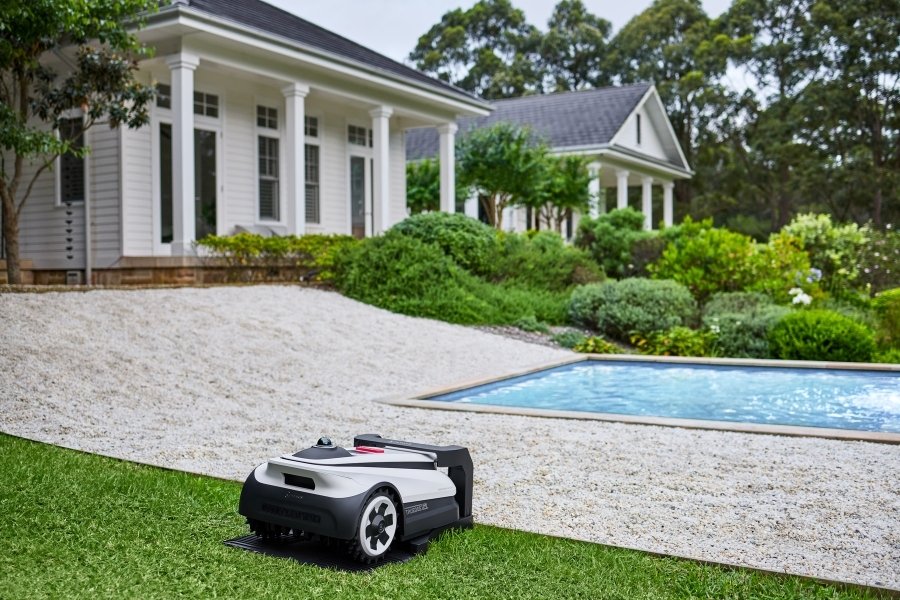
Lawn Size
Robot lawn mowers come with different working capacities: smaller models can cover up to 0.25 acres, while larger ones handle as big as 0.75 acre. Measure your lawn and check if the mower’s maximum coverage meets your needs. Some models, like the GOAT GX-600, cover more area by automatically resuming mowing from where they left off after recharging.
Slope Climbing Ability
Depending on the motor and wheel traction, robot mowers can handle different levels of gradients. For example, the GOAT A3000 LiDAR can manage slopes of up to 27°, making it helpful for hilly areas like San Francisco. Features like traction control or all-wheel drive allow for better grip on uneven ground, too.
Navigation & Mapping
Smart mowers use GPS, LiDAR, or cameras to create accurate maps of your lawn. For example, the GOAT A3000 LiDAR features a pioneering dual-LiDAR navigation system: a 360° LiDAR module that builds a 3D depth map with 0.8-inch precision, and a front-facing solid-state 3D ToF LiDAR paired with an AI camera, supporting operation even in shaded areas. Mapping also allows you to tell your mower which areas to prioritize or skip.
Obstacle Avoidance
For safety, robot mowers use multiple sensors to detect and avoid objects like trees, furniture, or small animals. GOAT mowers feature AIVI 3D Obstacle Avoidance, a technology that combines AI vision with 3D ToF LiDAR to quickly identify and dodge over 200 types of obstacles, including your furry friends, keeping both the mower and your surroundings safe.
Smart Features
Robot mowers not only cut grass but also let you customize how the job is done. You can easily set the cutting height, mowing schedule, no-go zones, and even mowing speed through a mobile app.
Premium models like the GOAT A3000 LiDAR take it further by fully automating the mapping process and letting you review boundary settings directly from the ECOVACS HOME app, without installing physical boundary wires. This gives you the flexibility to update boundaries whenever you like.
AI Integration
Robotic mowers powered by AI enhanced their accuracy and response times. By continuously learning from their environment through AI-cameras and sensors, they adapt their mowing patterns based on grass growth, usage patterns, or changes in your yard, like a sudden visit from a hedgehog. The result? More efficient mowing and better coverage over time.
Battery Life
Battery life determines how long the mower can run before needing to recharge, and some models can recharge at their base and resume where they left off. The GOAT A3000 LiDAR, for example, comes with a 5Ah battery that fully charges in just 45 minutes and can mow up to 5,382 square feet in only two hours1.
Waterproof
With waterproof protection, you can run your mower anytime without worrying about sudden weather changes. It can be stored outdoors and even conveniently rinsed off dirt and debris. Check the waterproof rating; models like GOAT mowers with IPX6 protection can withstand rain and hose-level water jets.
Noise Level
Unlike gas-powered mowers, robot mowers are quiet, like GOAT O1000 RTK operates at just 57 dBA, less than a normal conversation. Whether you like to mow early morning or late evening, quieter models are perfect for keeping the peace with your neighbors.
3 Best GOAT Robot Lawn Mowers for Your Lawn
GOAT A3000 LiDAR
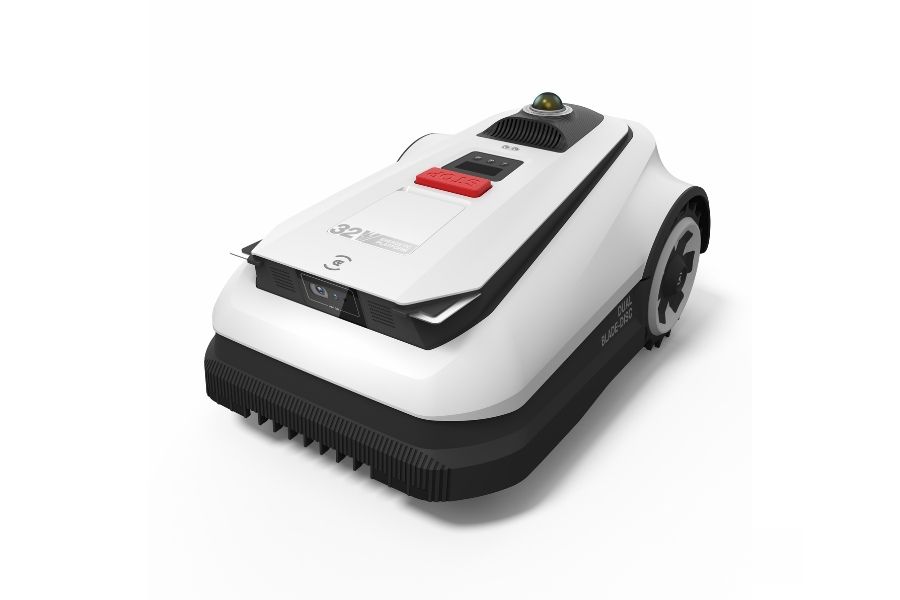
The high-end GOAT A3000 LiDAR is built for challenging terrain. Its dual blade discs run on a 32V platform, delivering 3 times the mowing efficiency2 of previous models and covering up to 4,305 square feet per hour3. Thanks to its dual-LiDAR navigation system, as well as a powerful motor and strong wheel traction, it easily climbs slopes up to 27° and crosses 1.75-inch barriers, even in low-light conditions. Plus, it's IPX6 waterproof, so clean up is easy with a quick rinse, making it both smart and low maintenance.
Shop GOAT A3000 LiDAR NowGOAT A2500 RTK
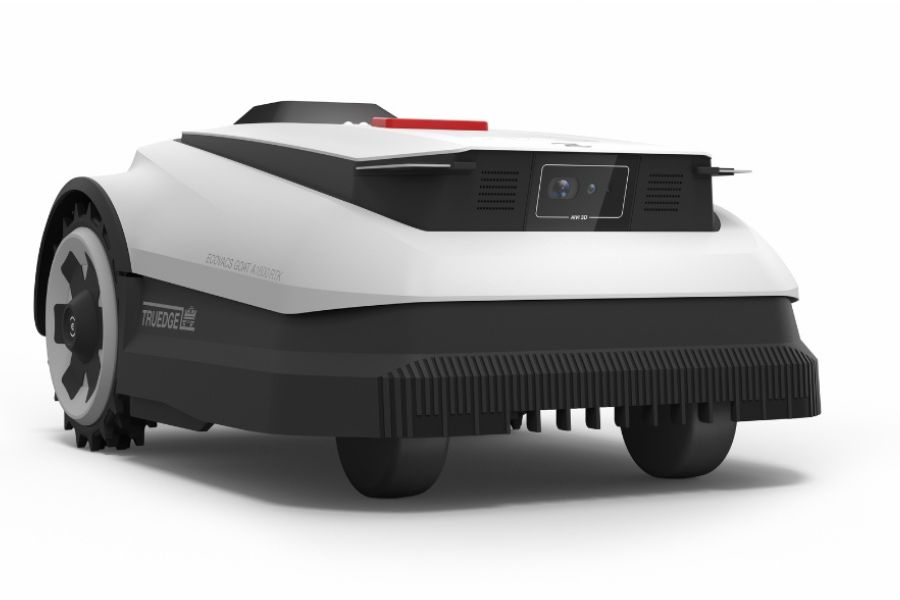
The GOAT A2500 RTK lets you customize the cutting height from 3 to 9 cm in 1 cm increments directly from the app, making it easy to adapt to different grass types. Its LiDAR-Enhanced RTK Navigation (LELS) connects to 45 satellites across various signal bands, giving it 0.8-inch accuracy. The TruEdge system with 3D-ToF and AI cameras delivers cut-to-edge mowing by detecting impassable boundaries while riding over passable ones. The LELS navigation also powers intelligent U-shaped path planning, achieving 100% coverage4 both horizontally and vertically.
Shop GOAT A2500 RTK NowGOAT O1000 RTK
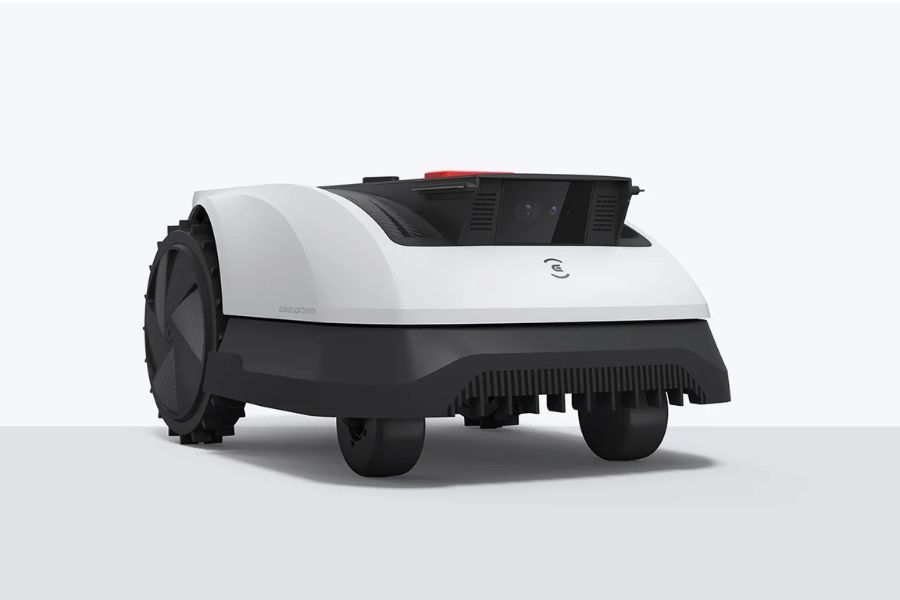
Compact but capable, the GOAT O1000 RTK navigates narrow paths as slim as 2.3 feet5, climbs slopes up to 24°, and crosses 1.18-inch barriers, while mowing at a speed of 1507 to 1938 square feet per hour6. AIVI 3D Obstacle Avoidance helps it recognize and dodge over 200 types of obstacles, including small animals. This model is also IPX6 waterproof, so it stands up well to unpredictable weather and makes cleaning as simple as a quick rinse.
Shop GOAT O1000 RTK NowFAQ
How often should a robot mower cut the grass?
Most robot mowers are designed to cut grass every day or several times a week. Frequent mowing keeps the lawn healthy and evenly trimmed without stressing the grass, especially during peak growing seasons in spring and early summer.
How long do robot mowers last?
With regular maintenance, a robot mower typically lasts 5 to 10 years. While battery life may decline after a few seasons, parts like blades and wheels can be replaced to extend the overall lifespan.
Can robot mowers work at night?
Yes, many robot mowers can operate at night, thanks to smart navigation enhanced by technologies like LiDAR. Compared to gas-powered mowers, they run much more quietly and are less likely to disturb your neighbors. Still, it's a good idea to check local noise regulations and consider wildlife safety in areas with nocturnal animals.
Disclaimer(s)
- 5,382 square feet in only two hours: Data from ECOVACS laboratory. The GOAT robotic lawn mowers can mow 5,382 square feet every two hours including charging time. The performance efficiency is based on tests conducted in real lawn scenarios in the laboratory and may vary depending on different actual usage conditions.
- 3x mowing efficiency: This refers exclusively compared to all previous GOAT models by ECOVACS, based on data from ECOVACS Laboratories. According to tests in the ECOVACS Lab environment, the GOAT A Family is supported by the 32V platform, which is an 80% increase over the GOAT G1's 18V. Also, the actual mowing period has decreased to 1/3 of the GOAT G1's with an 18V platform under controlled conditions. Actual results may vary depending on factors such as grass type, lawn size, terrain, and other environmental conditions.
- 4,305 square feet per hour: Data from ECOVACS laboratory. The GOAT robotic lawn mowers can mow 4,305 square feet per hour. The performance efficiency is based on tests conducted in real lawn scenarios in the laboratory and may vary depending on different actual usage conditions.
- 100% coverage: This refers to the full coverage of the claimed lawn area by ECOVACS GOAT, measured by ECOVACS Laboratory. For detailed area information, please kindly find it in the product spec. Actual results may vary depending on factors such as grass type, terrain, and other environmental conditions.
- 2.3 feet: This refers to the experimental result operated by ECOVACS Laboratory, that ECOVACS GOAT O Family is able to go through a path as narrow as 0.7m. Actual result may vary depending on factors such as grass type, lawn size, terrain, and other environmental conditions.
- 1507 to 1938 square feet per hour: Data from ECOVACS laboratory. The GOAT robotic lawn mowers can mow 1507 to 1938 square feet per hour. The performance efficiency is based on tests conducted in real lawn scenarios in the laboratory and may vary depending on different actual usage conditions.






